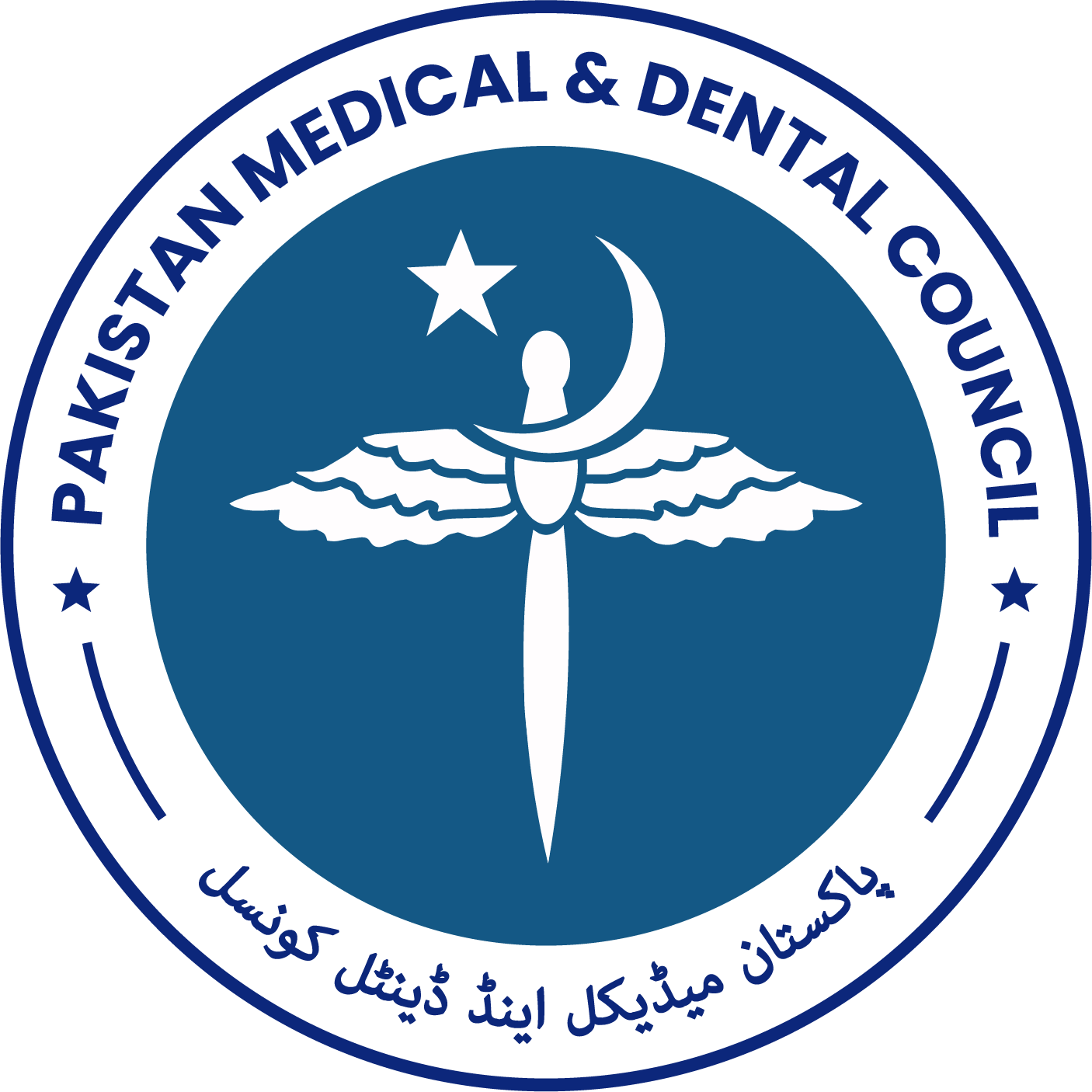Chemical Constituents of Artemisia Annua are Potent Inhibitors of Alpha-Amylase in Type II Diabetes
Abstract
Objective: To identify the inhibitory effects of artemisinin and its derivatives against Alpha-Amylase in Diabetes
II.
Study Design: Insilico approaches using Bioinformatics techniques were used to access the effects of arteisinin
and its derivatives.
Place and Duration of Study: The study was conducted comprising 6 month period at Capital University of
Science and Technology, Islamabad, Pakistan.
Materials and Methods: In this work, the inhibitory effects of artemisinin and its derivatives were determined
by using in silico approach. For proper inhibitory effects, molecular docking and the pharmacokinetic
properties of the ligand were identified.
Results: Artemether was found to be the ligand that shows the best binding energy -7.08 Kcal/mol, strong
hydrogen bonding, 4 alkyl bonds, 0 bumps, inhibition constant 13.26, and better pharmacokinetic properties. It
has been selected as a lead compound as it is the most active compound for alpha-amylase inhibition.
Conclusion: In future, this work can be used in wet-lab analysis to confirm its adequacy and efficacy.
References
Punthakee Z, Goldenberg R, Katz P. Definition, classification and diagnosis of diabetes, prediabetes and metabolic syndrome. Canadian journal of diabetes. 2018; 42: S10-5.
Sievers F, Higgins DG. The clustal omega multiple alignment package. In Multiple Sequence Alignment 2021; 2231: 3-16.
Rane AS, Joshi RS, Giri AP. Molecular determinant for specificity: Differential interaction of α-amylases with their Proteinaceous inhibitors. Biochimica et Biophysica Acta (BBA)-General Subjects. 2020:129703.
Ruswanto R, Mardianingrum R, Siswandono S, Kesuma D. Reverse docking, molecular docking, absorption,
distribution, and toxicity prediction of artemisinin as an anti-diabetic candidate. Molekul. 2020; 15: 88-96.
Tian W, Chen C, Lei X, Zhao J, Liang J. CASTp 3.0: computed atlas of surface topography of proteins. Nucleic acids research. 2018; 46: W363-7.
Khunti K, Ceriello A, Cos X, De Block C. Achievement of guideline targets for blood pressure, lipid, and glycaemic control in type 2 diabetes: a meta-analysis. Diabetes research and clinical practice. 2018; 137: 137-48.
Tripathi A, Misra K. Molecular docking: A structure-based drug designing approach. JSM Chem. 2017; 5: 1042-7.
Muchtaridi M, Dermawan D, Yusuf M. Molecular Docking, 3D Structure-Based Pharmacophore Modeling, and ADME Prediction of Alpha Mangostin and its Derivatives against Estrogen Receptor Alpha. Journal of Young Pharmacists. 2018;10: 252-9.
Tao X, Huang Y, Wang C, Chen F, Yang L, Ling L, et al. Recent developments in molecular docking technology applied in food science: a review. International Journal of Food Science and Technology. 2020; 55: 33-45.
Davies MJ, D'Alessio DA, Fradkin J, Kernan WN, Mathieu C, Mingrone G, et al. Management of hyperglycemia in type 2 diabetes, 2018. A consensus report by the American Diabetes Association (ADA) and the European Association for the Study of Diabetes (EASD). Diabetes care. 2018; 41: 2669-701.
Gupta A, Behl T, Kumar A, Singh S, Bhardwaj S, Goyal A. Unexplored potential of traditional Chinese medicine in diabetes mellitus. International Journal of Pharmaceutical Investigation. 2020; 10: 1-7.
Kim S, Chen J, Cheng T, Gindulyte A, He J, He S, et al. PubChem 2019 update: improved access to chemical data. Nucleic acids research. 2019; 47: D1102-9.
Kader SM, Hasan M, Ahmed S, Nahar K, Kabir F, Chy MN, et al. Antioxidant, Antibacterial and Cytotoxic activities of Ethanol extract and its different fractions of Sterculia cordata leaves. Discovery Phytomedicine. 2018; 5: 26-33.
Gurung AB, Ali MA, Lee J, Farah MA, Al-Anazi KM. Structurebased virtual screening of phytochemicals and repurposing of FDA approved antiviral drugs unravels lead molecules as potential inhibitors of coronavirus 3C-like protease enzyme. Journal of King Saud University-Science. 2020; 32: 2845-53.
Ranasinghe P, Mathangasinghe Y, Jayawardena R, Hills AP, Misra A. Prevalence and trends of metabolic syndrome among adults in the asia-pacific region: a systematic review. BMC public health. 2017; 17: 1-9.
Shen S, Liao Q, Lyu M, Wong YK, Zhang X, Zhou J, et al. The potential of artemisinins as anti-obesity agents via
modulating the immune system. Pharmacology & Therapeutics. 2020; 3: 107696.
Micheli L, Lucarini E, Trallori E, Avagliano C, De Caro C, Russo R, et al. Phaseolus vulgaris L. Extract: alpha-amylase inhibition against metabolic syndrome in mice. Nutrients. 2019; 11: 1778.
Arshad S, Tahir S, Tahir B, Tahir N, Rasool T, Munir S, et al. Risk factors associated with diabetes mellitus in local population of Lahore, Pakistan. Global Journal of Health Science. 2017; 9: 42.
Yang JJ, Yu D, Wen W, Saito E, Rahman S, Shu XO, et al. Association of diabetes with all-cause and cause-specific mortality in Asia: a pooled analysis of more than 1 million participants. JAMA network open. 2019; 2: e192696.
Arulanandam CD. In silico approach on drug repurposing- Antimalarial drugs against HIV-1 protease. bioRxiv. 2021.
Kristiani E, Kasmiyati S, Herawati M. The cytotoxic and apoptotic effects of wild and polyploidy genotype of
Artemisia cina extracts on the WiDr colon and HTB-183 lung cancer cell lines. Biodiversitas Journal of Biological
Diversity. 2021; 22.
Pires DE, Kaminskas LM, Ascher DB. Prediction and optimization of pharmacokinetic and toxicity properties of
the ligand. InComputational drug discovery and design. 2018; 1762: 271-84.
El-Gebali S, Mistry J, Bateman A, Eddy SR, Luciani A, Potter SC, et al. The Pfam protein families database in 2019. Nucleic acids research. 2019; 47: D427-32.
Efferth T. Beyond malaria: the inhibition of viruses by artemisinin-type compounds. Biotechnology advances.
; 36: 1730-7.
Singh N, Chandra R. Probing the binding interaction of ortho-vanillin derived chalcone with lysozyme: A
biophysical studies aided by in silico calculations. Journal of Molecular Liquids. 2021; 321: 114490.
Petersen MC, Shulman GI. Mechanisms of insulin action and insulin resistance. Physiological reviews. 2018; 98: 2133-223.
Ramazani E, Tayarani-Najaran Z, Shokoohinia Y, Mojarrab M. Comparison of the cytotoxic effects of different fractions of Artemisia ciniformis and Artemisia biennis on B16/F10, PC3 and MCF7 Cells. Research in Pharmaceutical Sciences. 2020; 15: 273.
Mathieu LC, Cox H, Early AM, Mok S, Lazrek Y, Paquet JC, et al. Local emergence in Amazonia of Plasmodium falciparum k13 C580Y mutants associated with in vitro artemisinin resistance. Elife. 2020; 9: e51015.















